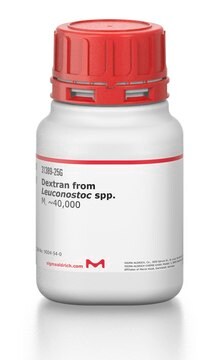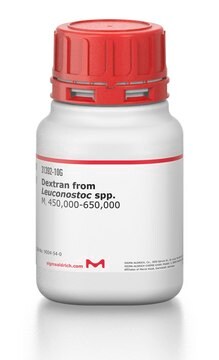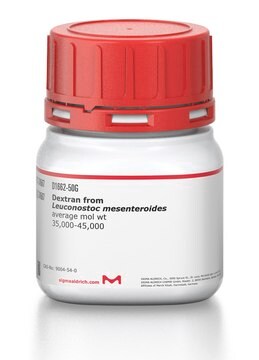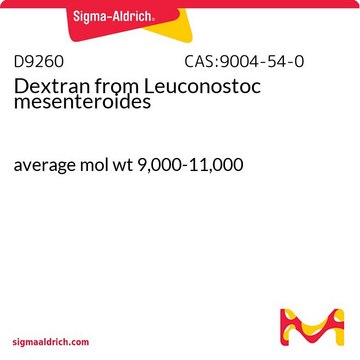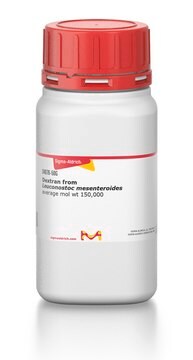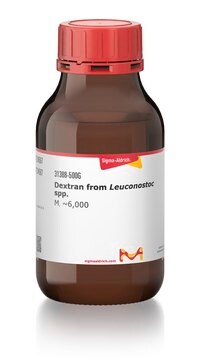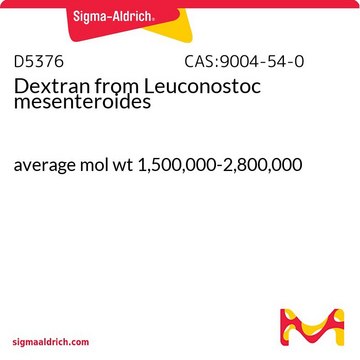D4626
Dextran from Leuconostoc mesenteroides
average mol wt 15,000-30,000
About This Item
Recommended Products
biological source
bacterial (Leuconostoc mesenteroides)
Quality Level
form
powder
optical activity
[α]/D 199°
mol wt
average mol wt 15,000-30,000
color
white
solubility
water: 20 mg/mL, clear, colorless to faintly yellow
SMILES string
O1C(C(C(C(C1CO)O)O)O)OCC2OC(C(C(C2O)O)O)OCC(O)C(O)C(O)C(O)C=O
InChI
1S/C18H32O16/c19-1-5(21)9(23)10(24)6(22)3-31-17-16(30)14(28)12(26)8(34-17)4-32-18-15(29)13(27)11(25)7(2-20)33-18/h1,5-18,20-30H,2-4H2
InChI key
FZWBNHMXJMCXLU-UHFFFAOYSA-N
Looking for similar products? Visit Product Comparison Guide
General description
Application
Preparation Note
Other Notes
Storage Class Code
11 - Combustible Solids
WGK
WGK 2
Flash Point(F)
Not applicable
Flash Point(C)
Not applicable
Personal Protective Equipment
Choose from one of the most recent versions:
Already Own This Product?
Find documentation for the products that you have recently purchased in the Document Library.
Customers Also Viewed
Articles
Dmitri Simberg (University of Colorado Anschutz Medical Campus, USA) reviews the used of dextran and cyclodextrin for the synthesis of nanoparticles used in drug delivery applications.
Dmitri Simberg (University of Colorado Anschutz Medical Campus, USA) reviews the used of dextran and cyclodextrin for the synthesis of nanoparticles used in drug delivery applications.
Our team of scientists has experience in all areas of research including Life Science, Material Science, Chemical Synthesis, Chromatography, Analytical and many others.
Contact Technical Service